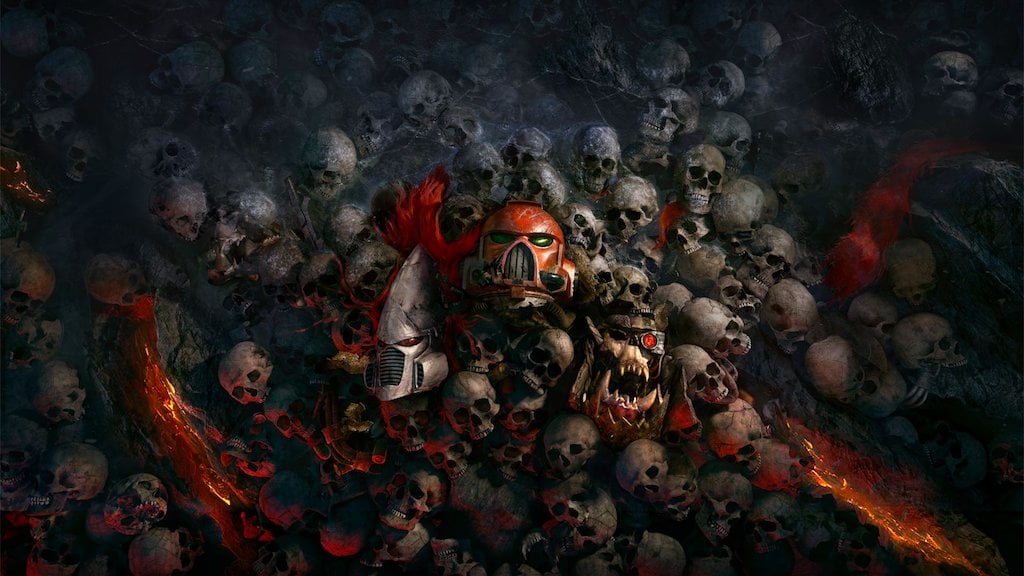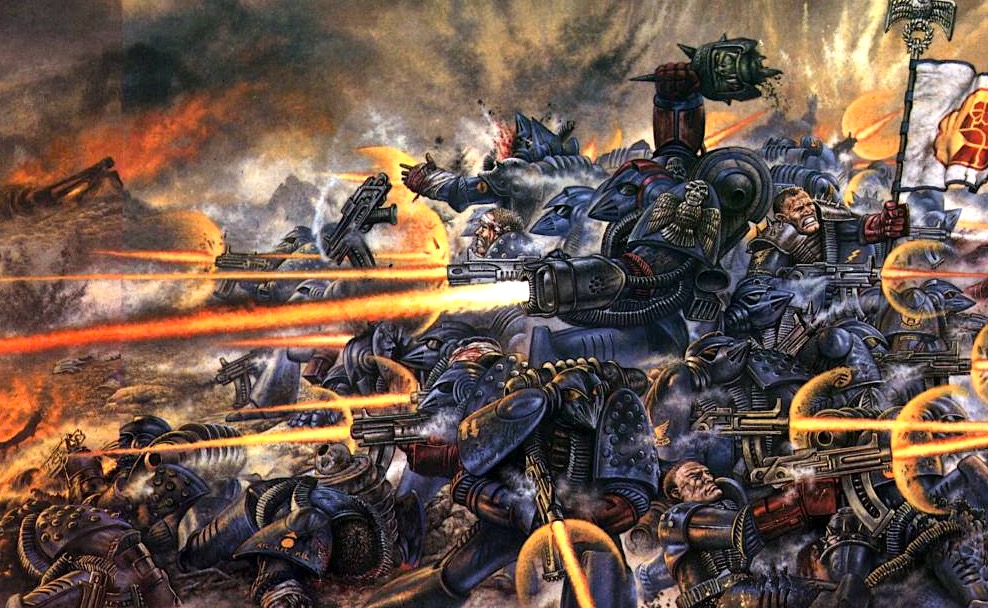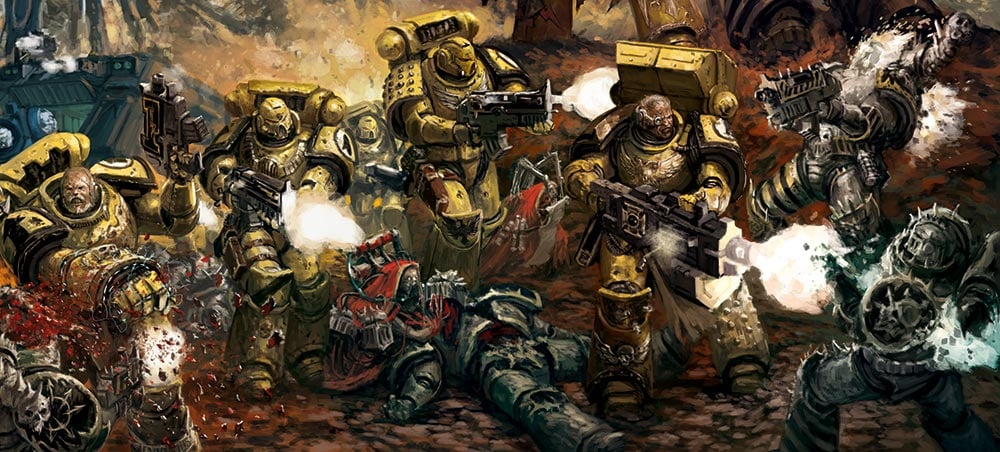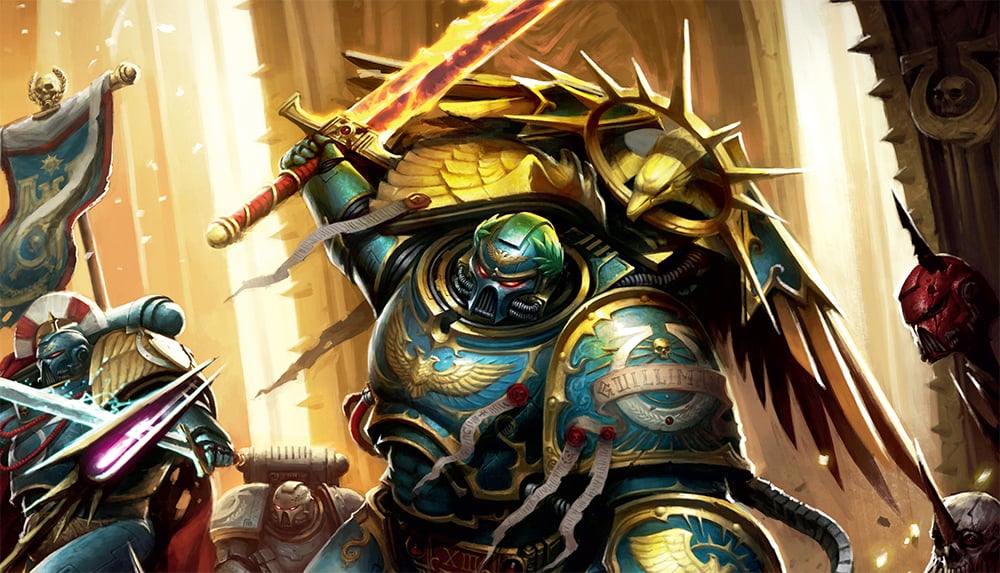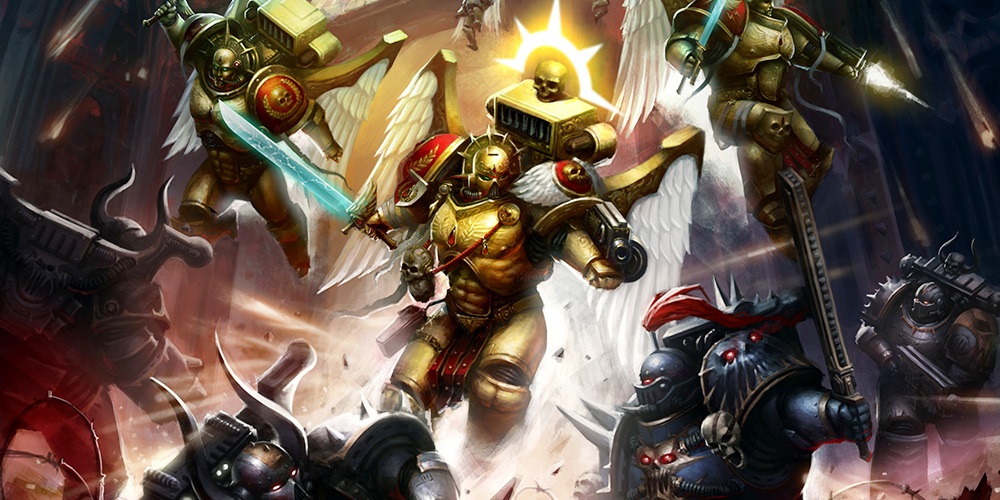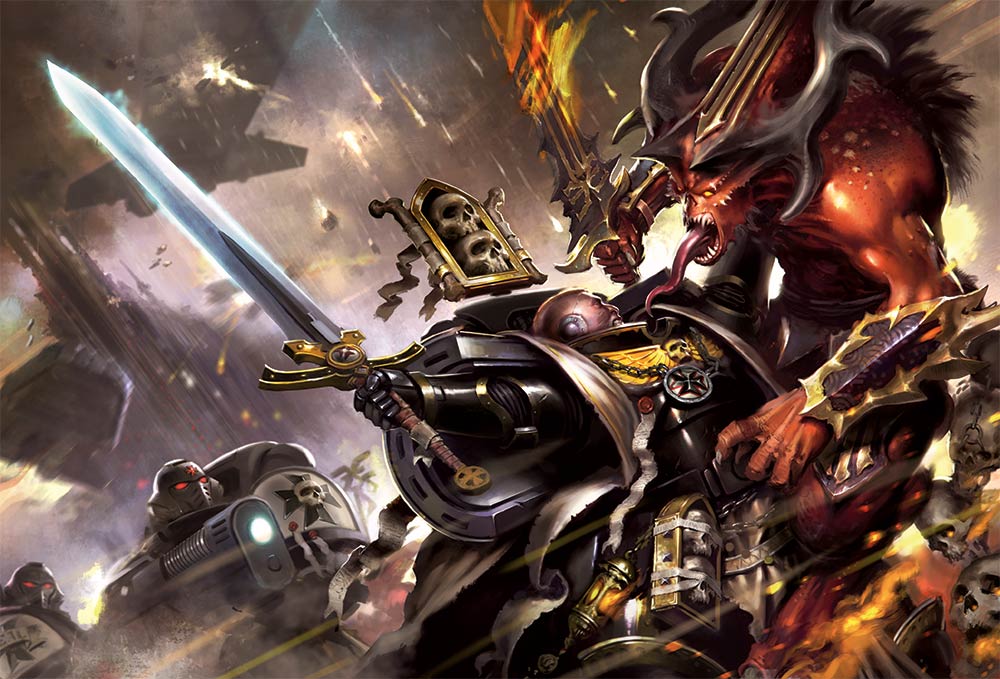40K: Rules You Might of Missed: Core Rules Edition


It’s a new 40k ruleset that is simpler than before but that doesn’t mean there aren’t some things that are tripping folks up.
Hey BoLS Readers, we’re starting a new series about rules that you might of missed. Now, I realize that the rules aren’t out yet but I’ve been watching games and I’ve seen some common questions pop-up. And seeing as how we have a physical copy of the books, I’m able to double check things. And after today’s Terrain Article, I figured it’s the perfect time to talk about the little things folks are glossing over.
In today’s edition, we’re taking a look at some of the Core Rules that folks have questions about. Some of these are no brainers – but some of these I’ve seen folks getting wrong just due to not having a copy of the rules. Hopefully this will help clear somethings up:
Movement Phase
“No part of the model’s base (or hull) can move further than [it’s movement characteristic].” I wanted to point this out because for several editions my gaming crew has referred to the “Tokyo Drifting” Laid Raider. Basically, folks used to be able to move a Land Raider (or other transport) the max distance, then pivot the Land Raider for an extra few inches of deployment. You can’t do that in 8th (and they cleared this up in previous editions, too – but it’s worth repeating.)
While we are on the subject of transports, Disembarking says, “When a unit disembarks, set it up on the battlefield so that all of is models are withing 3″ of the transport and not within 1″ of any enemy models.” Now, if a transport has any other restrictions for disembarking, those will be on the datasheet. But other than that – access ports/ramps/doors on the model don’t really matter any more. In fact facing doesn’t really matter either. Again – any additional restrictions will be listed in the datasheet. Just keep that in mind.
Also, disembarking happens BEFORE the transport moves. The unit may then act normally – “move, shoot, charge, fight, etc.” Now, if a unit is deploying using an alternate deployment method from a transport (read: Drop Pod), that transport typically deploys at the END of the phase. Because this happens at the END of the phase, the unit cannot move or advance after the deployment and they count as having moved. Check you datasheet for specifics!
Psychic Phase
As far as we can tell, after much reading in the BRB and the 8-pages of rules, if you roll a pair of 6’s on a psychic test this causes a Perils of the Warp. However, unless this kills the Pskyer, it does not stop the power from triggering. On top of that, the Psyker can keep slinging powers (if they can cast more than one per their turn – check their datasheet). The phase doesn’t end, you don’t lose dice, there are no other negative effects…
A Psyker cannot manifest the same power more than once (unless stated on the datasheet) and only 1 attempt to DENY a power regardless of how many psykers you have within range.
Shooting Phase
Units can shoot 360° – that includes vehicles. I’m almost positive folks are going to get into arguments about LoS with turrets or sponson. All I’m asking is that they show me in the rules where the old concepts of arcs, facings, fire points, etc. are – because I have the book and they aren’t there. And they aren’t on the datasheets, either. So keep that in mind for your next (or first) game!
You can split fire within a unit. That is a thing everyone can do! And you can fire all your guns that are equipped, the only exception is Pistols. You can either fire your pistol(s) or your other weapons. So don’t let your tanks fire their pistols or they can’t fire their cannons! (that’s a joke, tanks don’t have pistols. Then again, orks…)
Wounding
Wounding is weird. Let me lay out the steps really quick:
- Roll to Hit
- Roll to Wound
- Allocate Wounds
- Roll Saves
- Inflict Damage
In most cases folks are going to be able to fast roll the dice. If all target unit is the same, then you can just roll that bucket of dice and you’re good. But, if you have special rules (like shield drones for the T’au) then you have to do the allocate wounds 1 at a time. This part can be time consuming but mixed units aren’t a thing any more so it’s needed. Also note that a failed saving throw is not a wound – a model loses a wound for each point of damage it suffers. This will be important for things like Hive Tyrants and Tyrant Guard shield wall. Again, your datasheet will have more info!
Charge Phase
You can charge something you didn’t shoot at! So not only can you split fire you can charge a completely different unit – as long as you’re within 12″ you can declare a charge, but you do have to be within 12″ to declare said charge. Characters can basically counter-charge if they want to. They just have to be within 3″ of an enemy model. If they are within 3″ then they can move up to 3″ closer to the nearest enemy model.
Fight Phase
Every unit gets at least a 3″ pile-in when they are chosen to activate in the fight phase. This can be used to pull in other units and it can be used to move models closer to get more attacks. Only models that are within 1″ of the target enemy unit can attack. You can also split your attacks among your CC weapons – and everyone has a default Close Combat weapon. It’s just a generic melee attack with a strength equal to the user and a single damage, and you get a number of attacks with it equal to your attack characteristic.
Consolidating is ANOTHER 3″ move at the end of that unit’s fight activation. That can also be used to pull in another enemy unit(s). Keep in mind, if they weren’t in combat before, they are now and there can be activated to swing at your unit with no repercussions!
Now, there are a ton of other little things, but I feel like this is a pretty good list of minor mistakes I’ve seen folks ask questions about or get confused. And once again, there are exceptions to these rules – CHECK YOUR DATASHEETS! We’re all learning so before you start a huge argument just remember that the other player might have missed something or found something you didn’t know. Ask to see the rule, then read the core rule and the corresponding rule. If it’s still unclear read it again. Discuss it with your opponent and see if you can come to a conclusion. If you still can’t, dice off and keep playing. …Or throw a fit, pack up your stuff, go home and complain about it on the internet. I’m not actually suggesting that – but you know who you are…
We’ll be back with more Rules you might have missed all next week!

